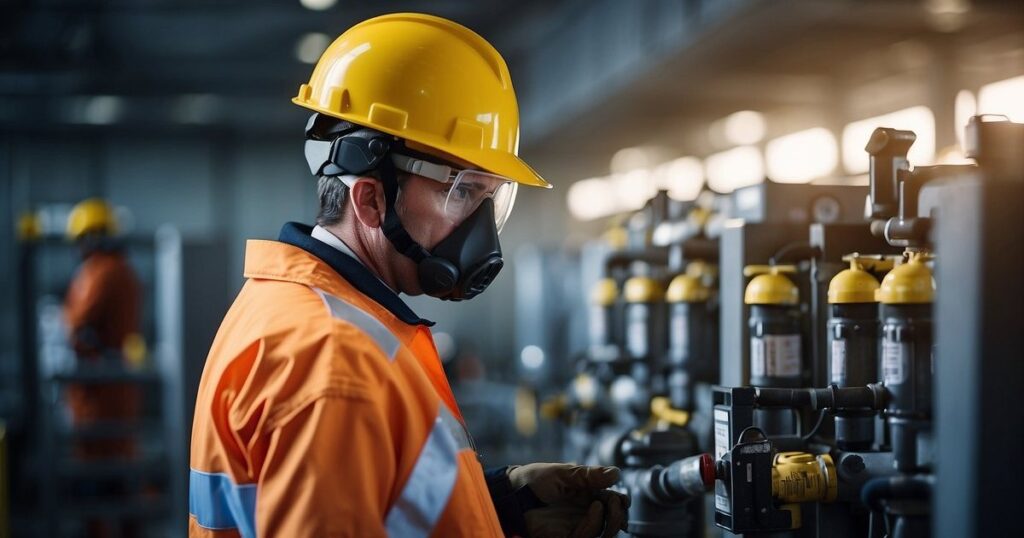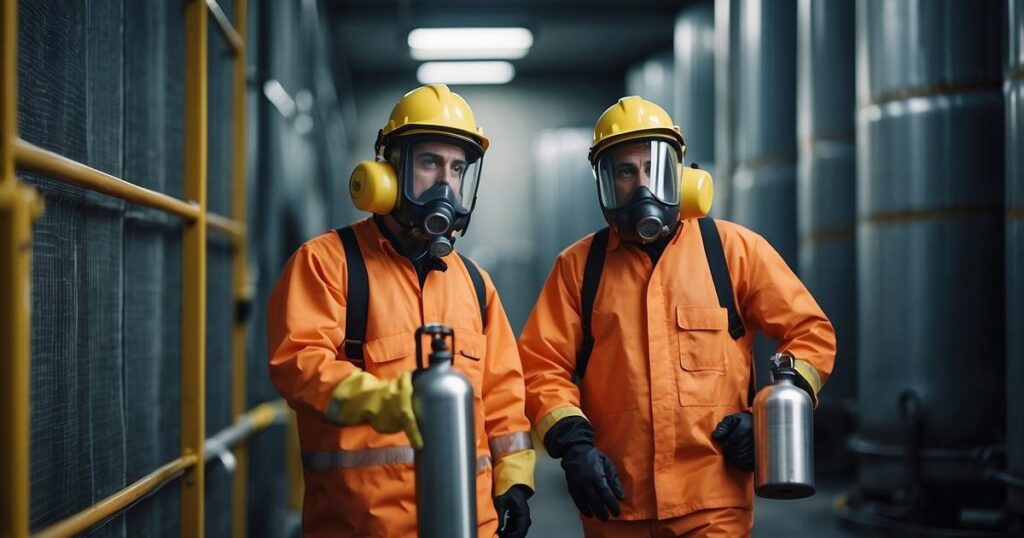In industrial work, the safe handling of gases is critical. Industrial gases, such as oxygen, nitrogen, and various flammable and toxic substances, are the backbone for many processes across different sectors. However, these gases come with inherent risks that necessitate rigorous safety measures. Your awareness and understanding of the risks associated with these gases are the first step towards ensuring a secure working environment. The proper handling of industrial gases safeguards your well-being and colleagues and the integrity of your facilities.
Safety procedures and best practices form the cornerstone of industrial gas safety. These include correct storage, transportation, usage, and emergency response planning. Adherence to these protocols minimises the risk of accidents, ranging from minor injuries to more severe consequences. You need to be well-versed with these measures and apply them diligently. Regular training and updates on these practices can significantly reinforce workplace safety, making industrial gas handling a well-governed aspect of your daily operations.
Key Takeaways
- Understanding and applying safety measures is fundamental when handling industrial gases.
- Regular training on safety procedures is vital to maintain a secure workplace.
- Best practices must be diligently applied to mitigate hazards associated with industrial gases.
Understanding Industrial Gases and Associated Risks

Industrial gases play a crucial role in various sectors but come with inherent risks requiring strict safety measures. Understanding the different types of gases, their hazards, and control measures is vital to prevent accidents and ensure safety.
Classification of Industrial Gases
Industrial gases can be broadly categorised based on their state at room temperature:
- Compressed Gas: Stored under high pressure, includes gases like oxygen and nitrogen.
- Liquefied Gas: This gas is liquid under pressure and includes carbon dioxide and ammonia.
- Dissolved Gas: Gas dissolved in a solvent, such as acetylene in acetone.
Hazards and Control Measures
Handling industrial gases involves multiple hazards:
- Flammability: Flammable gases like hydrogen and acetylene can create explosive environments if leaked.
- Toxicity: Gases such as chlorine can cause serious health risks upon inhalation.
- Asphyxiation: Inert gases like nitrogen can displace oxygen in the air, leading to suffocation.
To mitigate these risks:
- Use appropriate containers and safety equipment, like regulators and valves.
- Store gases in labelled, well-ventilated storage areas away from ignition sources.
- Implement engineering controls such as flame arrestors and gas detection systems.
- Conduct regular risk assessments and ensure constant monitoring of gas levels.
Health Impact and First Aid
Exposure to harmful gases might result in:
- Injuries from fires or explosions.
- Toxicity leads to chemical burns or systemic health effects.
- Asphyxiation is potentially fatal without timely intervention.
In case of exposure:
- Remove the victim from the contaminated area to fresh air immediately.
- Call emergency services and follow their guidance.
- Provide first aid if trained; apply cold water to burns caused by cold or corrosive gases.
Remember your safety and that those around you depend on strict adherence to industrial gas safety measures and proper handling procedures.
Safety Procedures and Best Practices

Ensuring your and your colleagues’ safety is paramount when dealing with industrial gases. Strict adherence to safety procedures and implementation of best practices is essential to prevent accidents and maintain a secure environment.
Safe Storage and Handling
Storage:
- Store your industrial and compressed gas cylinders upright and secure them with chains or straps to prevent tipping.
- Keep cylinders in well-ventilated areas and away from heat sources and ignition to minimise the fire risk.
Handling:
- Always use suitable lifting techniques and cylinder carts for transport within the workplace. Never drag or roll cylinders.
- Inspect cylinders, valves, regulators, and protective caps for damage or wear and perform maintenance as required.
Personal Protective Equipment and Training
PPE:
- Wear appropriate personal protective equipment, including safety glasses and gloves, to protect against potential hazards during handling and usage.
- Maintain PPE in good condition and replace any damaged items promptly.
Training:
- Ensure workers receive adequate industrial gas safety training, including correct handling, usage, and emergency response procedures.
- Keep your training up-to-date to align with evolving international safety standards and practices.
Emergency Response and Evacuation Plans
Emergency Planning:
- Develop and maintain an effective emergency response plan that includes prompt evacuation procedures for hazards related to industrial gases.
- Clearly label storage areas and cylinders with the appropriate hazard signage and ensure that all workers are familiar with the significance of these labels.
Control Measures:
- Install necessary control systems, such as gas detection and fire suppression, to manage the risks of mishandling dangerous goods.
- Conduct regular drills to test your response to potential gas-related incidents, ensuring swift and effective action when needed.
Frequently Asked Questions
Safety when handling industrial gases is paramount. This section guides to ensure adherence to industrial gas safety measures.
What precautions should be observed while storing industrial gas cylinders?
You must store industrial gas cylinders upright and secure them to prevent tipping. Store them in a well-ventilated area, away from direct sunlight and combustible materials. Ensure the storage temperature does not exceed 52°C as per British safety standards.
How can one ensure safety during the transportation of compressed gas cylinders?
During transportation, ensure compressed gas cylinders are well-secured in a position that prevents them from falling or shifting. Use a suitable vehicle with adequate ventilation, and display the appropriate hazard placards. Check that cylinder valves are closed and protective caps are in place before transport.
What is the recommended procedure for the safe handling of LPG gas cylinders?
When handling LPG gas cylinders, always keep the cylinder upright and move it using approved equipment such as trolleys. Check for leaks regularly by using soapy water, not flames. Ensure that LPG cylinders are stored outside, away from building entry point drains, and in an area with good drainage to disperse any leaks.
Which safety checks must be conducted before using an industrial gas cylinder?
Before using an industrial gas cylinder, inspect it for any signs of damage, corrosion, or leakage. Verify that the cylinder label matches your requirements, and check the pressure gauge to ensure it is within the safe operating range.
What measures should be taken to avoid hazards when using oxygen gas industrially?
Avoid using oil or grease, which can ignite in the presence of oxygen. Ensure the area is well-ventilated. Use equipment designed for oxygen service and regularly check for any signs of oxidation or combustion when using oxygen gas industrially.
How should one respond to an industrial gas cylinder leak to guarantee safety?
In case of a leak, isolate the cylinder immediately, evacuate the area, and use appropriate personal protective equipment. Do not attempt repairs; contact emergency services and the supplier for specialised assistance. Ventilation is critical to disperse the gas and reduce the risk of asphyxiation or explosion.


